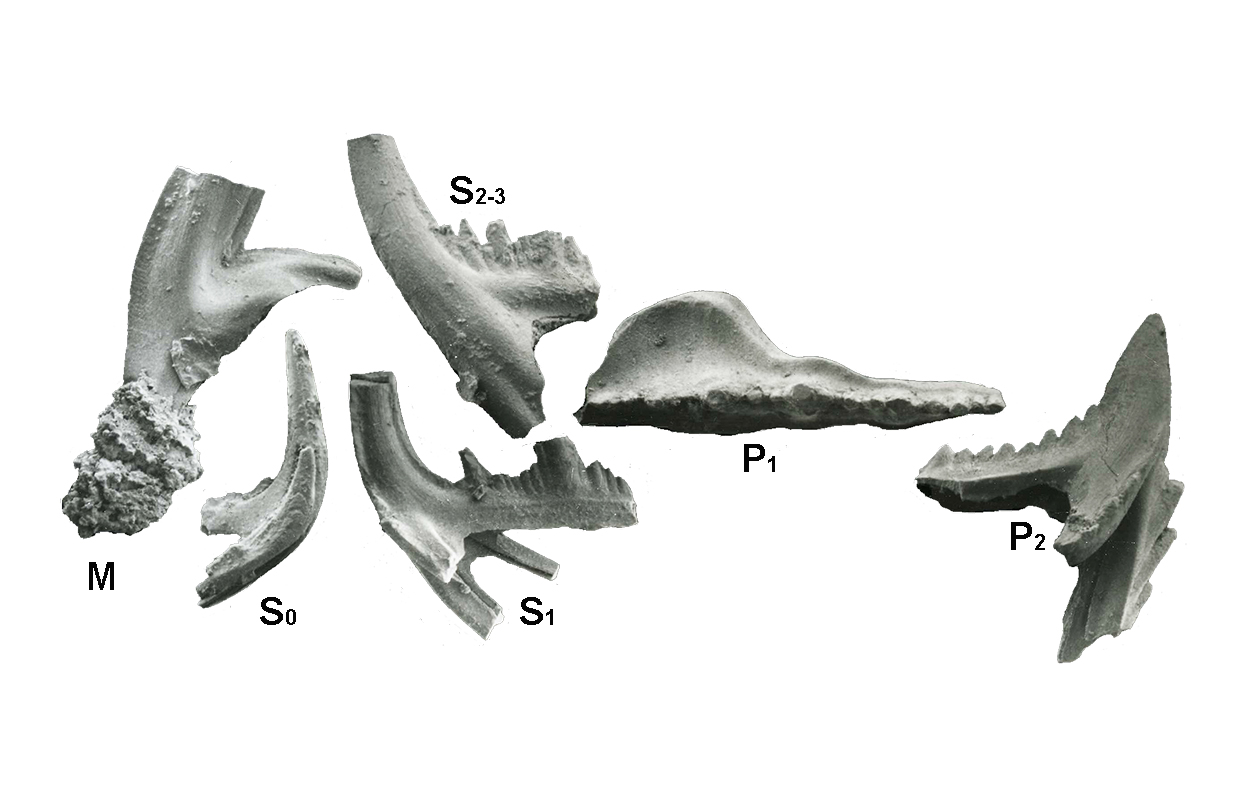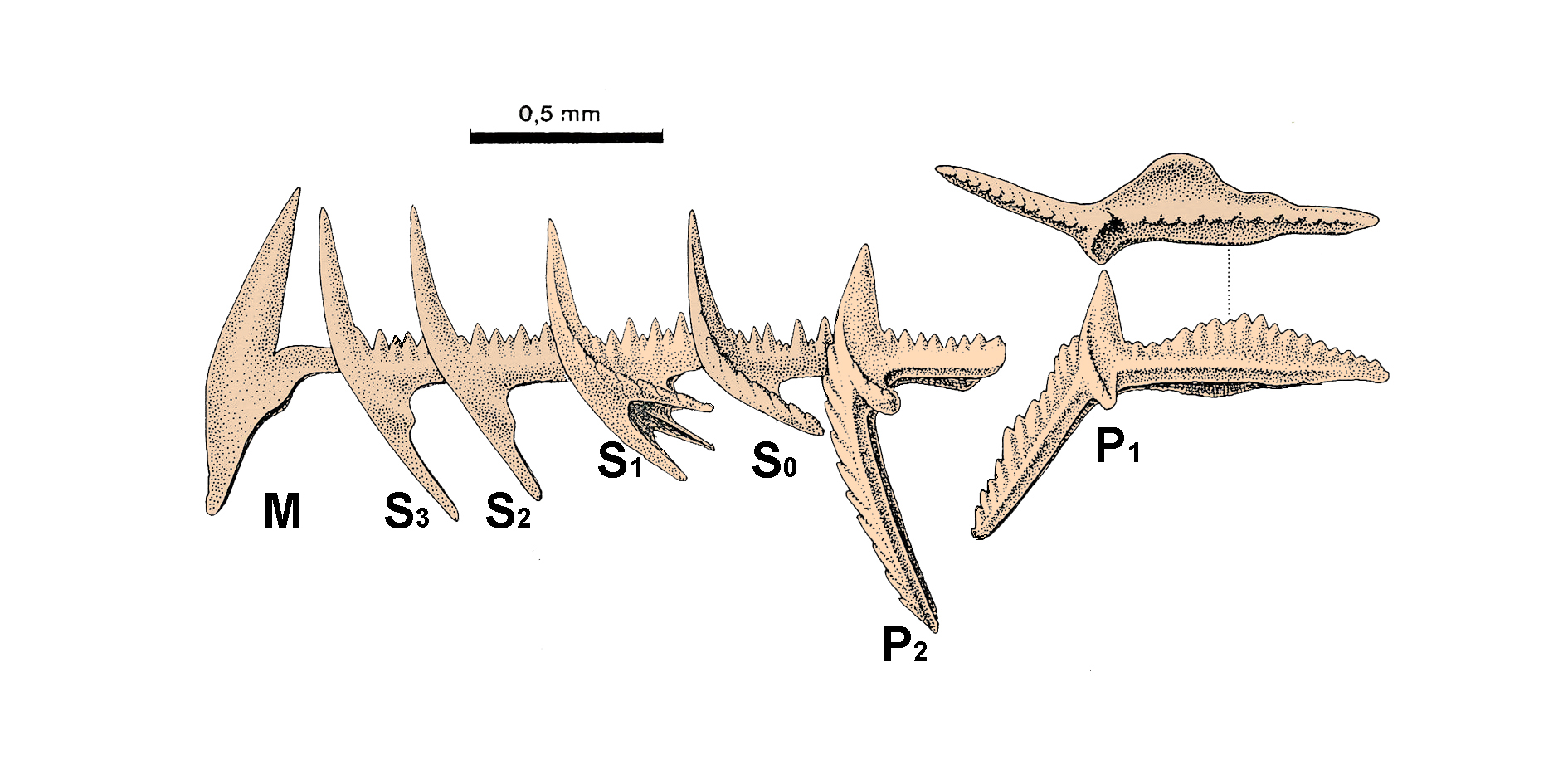Baltoniodus alobatus (Bergstrom, 1971)
Sugerowana cytacja: Moczyński 2018. Baltoniodus alobatus (Bergstrom, 1971) Ikonoteka (http://ikonoteka.paleo.pan.pl/xwiki/bin/view/Species/Baltoniodus+alobatus)
Diagnoza The sp elements develop a thick , smooth platform with slightly raised edges, of variable shape, usually rather narrow and somewhat irregular. Porównanie The species was proposed by BERGSTROM (1971) as a multielement one; complete illustration was given by NOWLAN ( 1981). In typical North Atlantic sections B. variabilis evolves into its successor B. gerdae (BERGSTROM, 1971), having an additional process developed by a widening of the platform of the sp element (BERGSTROM 1971 ; BERGSTROMand CARNES 1976). In Mójcza B.gerdae has not been identified , while populations of B. variabilis continue to occur in strata presumably coeval with these including B. gerdae and even younger beds. The youngest populations of the lineage in Mojcza are clearly different from typical B. variabilis. Some shallowing of the sinuosity in the platform contour can be identified in sample MA-85 and above it. This is mostly a result of increasing population variability of this character. Even as high as in the sample MA-22 an element was found (DZIK 1978: PI. 13: 3) with the platform being generally of the B. variabilis morphology, except for its sharp upper edge. Exami nations of specimens of Baltoniodus alobatus from Estonia , in the collection of Dr. Viive VIIRA, Tallinn, led me to suggest that the populations from Mójcza and Estonia were conspecific (DZIK 1978). If this is really the case, they represent the chronospecies, which in the Baltic region and other North Atlantic localities occurs above the range of B. gerdae .Practically the only feature that enables identification of B. alobatus, if such a wide range of variability in the shape of the platform is accepted (see also KENNEDY et al. 1979, p. 54 6, and ORCHARD 1980,), is a sharp upper edge of the platform and its generally higher thickness. The proposed gradual pattern of the transition between B. variahilis and B. alobatus diminishes their value as zona l fossils. Autekologia Występowanie geograficzne Zasięg czasowy Populations from about 1.5 m (late A. tvaerensis) up to 2.5 m above the bentonite (A. tvaerensis/superbus tran sition zone) are attributed to this species. Materiały muzealne Literatura Dzik, J. 1994a Conodonts of the Mójcza Limestone. In: J. Dzik, E. Olempska, & A. Pisera. Ordovician carbonate platform of the Holy Cross Mountains. Palaeontologia Polonica 53, 43-128. |
|


